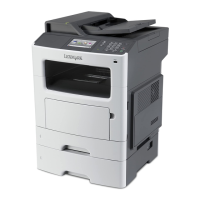Glossary
accepting
The state of a print queue when it allows the submission of new print jobs.
If a queue is in the accepting state, the user is able to use the lp or lpr
command to submit printer requests.
AIX
IBM's version of the UNIX operating system.
alias
A part of the BSD printer subsystem, aliases let you create multiple names for
the same print queue.
Automatic Printer Language
A printer language option for printers that support both PostScript and PCL
emulation printer languages. This option gives users the ability to print
PostScript, PCL emulation, and ASCII text files to the same print queue.
baud rate
The transmission speed of the serial communication. The sending device speed
must match the receiving port speed.
BPP device
A designation for Sun's bidirectional parallel port.
This type of destination usually has a device name that resembles /dev.bppxx,
replacing xx with the appropriate device number.
community name See SNMP community name.
disabled
The state of a print queue when print jobs are held in the print queue.
DNS See Domain Name System.
Domain Name System (DNS)
Something that resolves IP addresses to hostnames
enabled
The state of a print queue when print jobs are sent from the print queue to the
printer.
external print server
Hardware used to connect printers to a LAN using either a Token-Ring or
Ethernet cable.
The external print server allows network connectivity of a parallel or serial
printer.
firmware
Software that resides in the print server; also called microcode.
firmware level
The version of the firmware.
gateway
The connection device between the LAN and other equipment, such as
computers.
hostname
Name used to identify a network printer or computer.
internal print server
A card installed inside a printer to connect the printer to the network.
Internet Protocol (IP)
A standard protocol that specifies how packets are passed through networks.
It identifies the format of the packet and describes how it should be delivered
in a seamless manner. Although it is a separate protocol from TCP, it is often
referred to as TCP/IP because TCP and IP protocols are often used together.
IP address
The unique physical address of the printer on a network using TCP/IP protocol.
LAN See Local Area Network.
LAN segment
Any portion of a LAN that operates independently of, but is connected to, the
network by bridges or routers.
44

